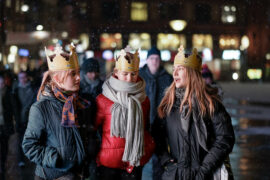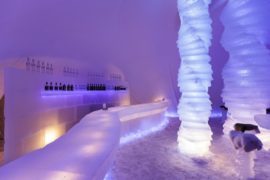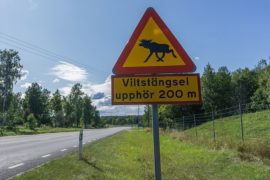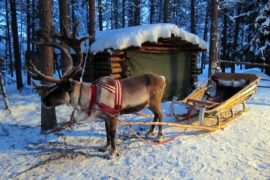Although Vikings are often portrayed as brutal raiders who sailed the seas, pillaging and plundering wherever they went, the reality is that the majority of Vikings led simple and peaceful lives, farming in small villages.
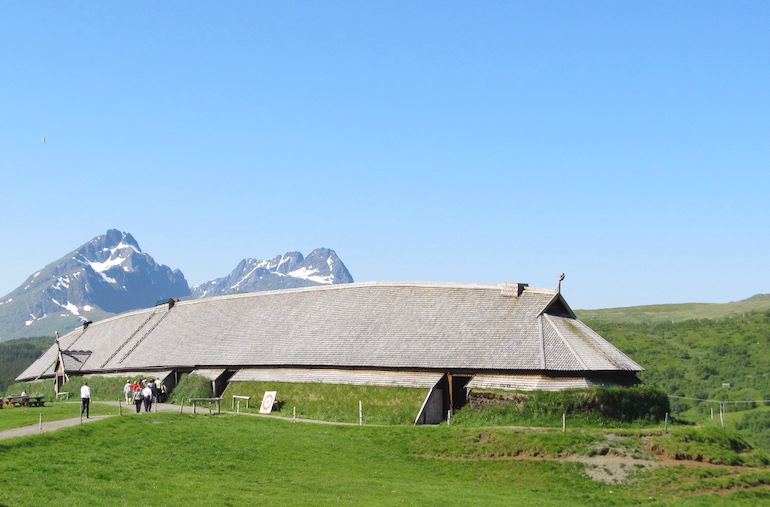
While Viking raids certainly occurred, they were a relatively small part of Viking life. Instead, most Vikings focused on agriculture, trading and community-building, with their villages serving as the backbone of this way of life.
At the heart of these villages were Viking longhouses. These structures were versatile and practical buildings that functioned as homes, workshops and gathering places for families and their livestock.
The longhouse was crucial to the daily life and survival of the Viking and was considered the centrepiece of Scandinavian farms during the Viking Age.
What did Viking longhouses look like?
Inside the longhouse
Furniture and home comforts
Life in a Viking longhouse
Reconstructing longhouses today
5 best Viking longhouses in the Nordic countries
What did Viking longhouses look like?
The size of longhouses varied, but they typically measured around 5–7 metres (15–25 feet) in width and 15–75 meters (50–250 feet) in length.
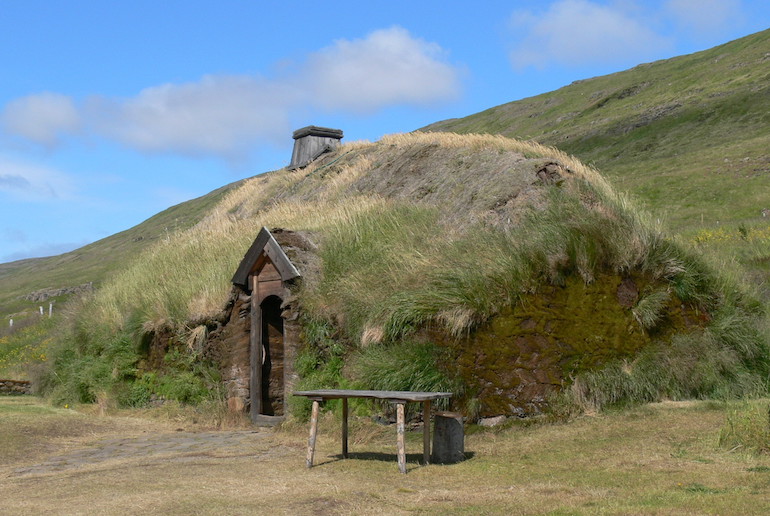
They were built using materials that were easy to find in the local area. For example, roofs were made from wood, thatch or turf depending on what was available, and the walls were made from materials such as clay, wood planks or wattle and daub. This kept the inside cosy and dry.
Perhaps one of the coolest aspects of a Viking longhouse is its boat-like shape, which maximized material use and provided better protection against the elements.
In areas where timber was scarce, the Vikings built turf houses. Layers of turf or sod were stacked for the walls and roofs, which provided good insulation.
You may have noticed that Viking longhouses lack windows. Instead, they relied on openings in the roof to provide light and ventilation.
These vents also served to release smoke from the hearth, which was usually located in the centre of the longhouse.
This design was practical, as it allowed for better insulation and kept the interior of the longhouse warm in the cold weather.
Inside the longhouse
If you ever get the chance to step inside a Viking longhouse (there are some replicas recommended below), you will quickly notice the quirky features. From cleverly divided spaces to corridors and cosy fire pits, these homes were full of surprises!
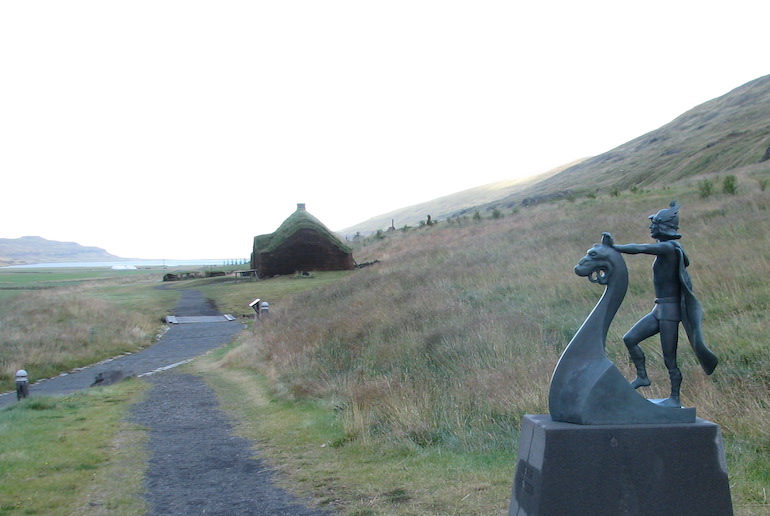
Supporting columns, often made of wood or stone, were strategically placed throughout the longhouse to provide structural stability and support the weight of the roof, allowing for spacious and open communal areas.
There was also a central corridor that served as a multifunctional space. It was were communal activities took place, providing warmth, light and a gathering place for the Viking inhabitants.
Wooden benches served as versatile seating and sleeping spots, while furry friends found their own cosy nooks. Storage spaces kept things organized, and clever ventilation solutions let in fresh air and natural light.
Furniture and home comforts
In Viking longhouses, furniture was rare, but that didn’t stop them from getting creative and making their own! Let’s take a peek at the typical items you’d find inside:
- Storage boxes and trunks to keep things organized.
- Collapsible tables for when it was time to feast.
- Benches which doubled as both seating and sleeping spots.
- Bedding which included animal hides, feather-filled pillows and even rare luxury textiles.
- Sometimes wealthier homes displayed looms, tapestries and rugs for that touch of elegance.
Vikings knew how to make the most of what they had, adding comfort and style to their living spaces with resourcefulness and a lighthearted spirit.
Life in a Viking longhouse
So, what was life like inside of a Viking longhouse? Well, it was busy! Sometimes multiple families or extended families lived in each longhouse, creating a vibrant community.
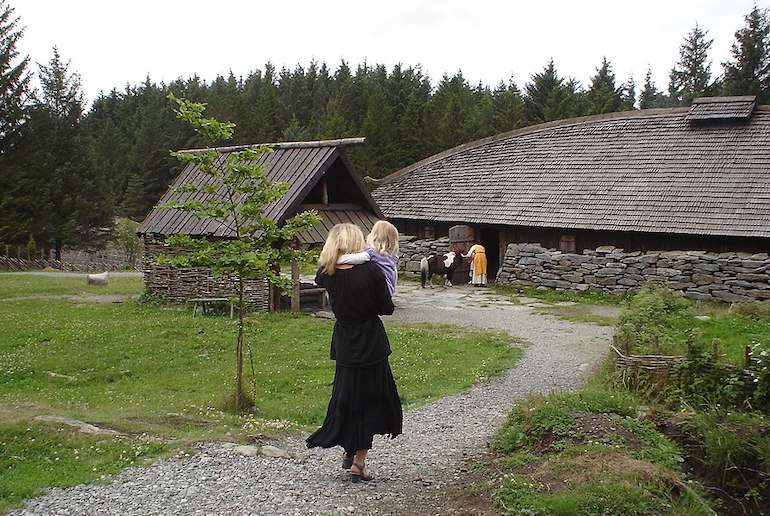
Life inside a longhouse was a whirlwind of daily routines, chores and agricultural work. From dawn till dusk, Vikings tended their animals, worked the land and shared communal tasks.
Inside a Viking longhouse, privacy was a rare luxury. Shared spaces for cooking, eating and sleeping were the norm. Picture this: multiple families or extended families sharing tight quarters, cooking, eating and sleeping in the same spaces.
It may not sound luxurious, but at least there was a sense of togetherness and community!
Reconstructing longhouses today
Preserving wooden and earthen structures while reconstructing longhouses today presents a unique challenge.
Wood is susceptible to decay, weathering and insect damage over time. Due to these factors, these structures have become quite rare.
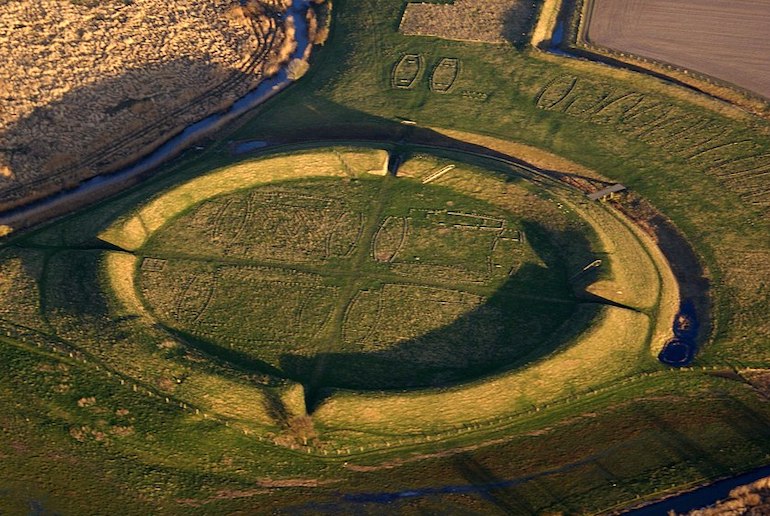
However, archaeological discoveries of stone hearths, tools and weapons provide fascinating insights into Viking culture.
These artefacts offer us a tangible connection to a bygone era, shedding light on the skills, technology and tools of the Vikings.
Likewise, Norse sagas have provided a valuable insight into longhouses. These accounts shed light on early Norwegian history, which was primarily passed down through stories and tales.
Top 5 Viking longhouses to visit in the Nordic countries
So, now that you’ve learned a bit about Viking longhouses, chances are you would like to go see one for yourself. Well, that is completely possible!
Across Scandinavia, there are numerous historical and archaeological sites and museums where you can explore and even step inside reconstructed Viking longhouses. Let’s look at a few of them.
Lofotr Viking Museum
Lofoten, Norway
At the Lofotr Viking Museum in Lofoten, visitors wander around a remarkable reconstruction of a Chieftain’s longhouse, spanning an impressive length of over 80 metres.
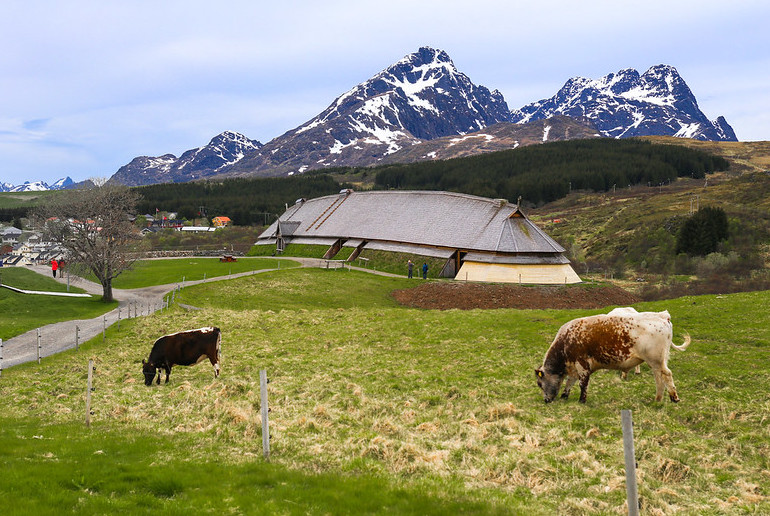
The museum also features a fully functional blacksmith’s forge.
Our favourite part is the sense of stepping into history as you enter the Chieftain’s house, which, by the way, holds the title of the world’s biggest Viking longhouse.
It’s a very impressive structure, and we recommend you buy tickets here!
Not only can you explore the museum and the longhouses, but you can also visit the nearby Nusfjord to really feel the Viking spirit come to life!
Avaldsnes Viking Village
Western Norway
Another fantastic option is the Avaldsnes Viking Village, which features multiple reconstructions and actors portraying Viking life!
We love how immersive the atmosphere is: as you step into the village, you are instantly transported back in time, surrounded by authentic Viking structures and the lively presence of Viking re-enactors.
Trelleborg
Denmark
To visit the Trelleborg Viking Fortress, you’ll have to venture to Zealand, Denmark. Here you will discover the impressive Trelleborg circular fort, built around 900AD.
This vast structure stands as a testament to Viking engineering and military prowess.
Additionally, a modern museum accompanies the fort, featuring captivating displays that offer insights into Viking life and culture.
Eiríksstaðir
Iceland
In Eiríksstaðir, you can experience the intriguing history of the Viking explorer Erik the Red at the Eiríksstaðir Viking Farmstead.
This reconstructed farm offers a glimpse into the daily life of Erik the Red and his family during the Viking Age.
One of the highlights is the opportunity to try real Viking tools and experience the craftsmanship firsthand.
Whether it’s shaping wood with traditional tools or working with authentic materials, you can truly appreciate the skills and techniques of Viking artisans!
The three-day tour of Western Iceland’s wild western coast includes entrance to the Eiriksstaðir Viking Longhouse.
Birka
Sweden
In Birka, near Stockholm, you can uncover the fascinating history of a Viking trading hub at the Birka Viking City. This UNESCO World Heritage Site offers a captivating glimpse into the bustling life of a Viking town.
We love this site because it really gives visitors an insight into an authentic Viking experience!
The boat trip to Birka Viking City is included in the Stockholm City Pass: to see if a Stockholm Pass can save you money, check our guide.
See also:
Viking attractions near Copenhagen
Viking runes and their meanings
Famous Vikings you should know about


